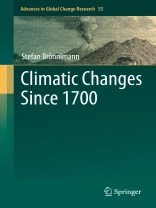The proposed book is not only a tribute to the work of Brückner (and indeed also a personal tribute, since Brückner wrote his book at the Institute of Geography of the University of Bern), but references to Brückner’s book are also a conceptual tool in the proposed book, though used sparingly and thoughtfully. Apart from providing historical context, references may facilitate introducing some complex topics, for instance by first presenting Brückner’s view and then complementing the picture with today’s understanding. References can be used for contrast: Comparing Brückner’s methods and data with today’s research concepts makes the progress in the field easily understandable. The enormous growth of information since Brükner’s time allows a much more detailed perspective on some scientific problems. Or references can be used to highlight similarity. Some aspects have not changed over time. Finally, the book complements Brückner’s studies by adding the arguably most interesting and certainly most relevant period, the past 120 years.
สารบัญ
1. Introduction.- 2. The Basis: Past Climate Observations and Methods.- 3. The Machinery: Mechanisms behind Climate Changes.- 4. Climate Changes since 1700.- 5. Conclusions.- References.












